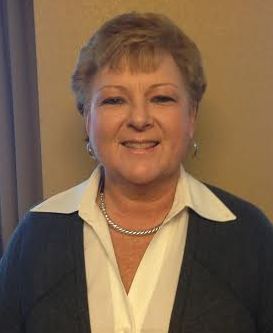ICD-10 Preparation Means Actively Protecting Revenue Stream

- Provider organizations and physicians continue to prepare for the ICD-10’s unknown revenue impact as the October 1, 2015 looms nearer and providers seek to actively protect revenue stream.

Pam Jodock, HIMSS Senior Director of Health Business Solutions, talked with RevCycleIntelligence.com this week about a consumer-centric revenue cycle’s future, the financial implications of ICD-10 and ICD-11, and HIMSS’ efforts to improve revenue cycle.
Jodock advises the healthcare industry consider October 1, 2015 not as the endgame, but as the beginning of operationalizing the ICD-10 code set.
“Once October hits, we have to operationalize and make sure that our organizations and businesses continue to run smoothly post-October,” explains Jodock.
ICD-10 will strengthen the global healthcare community, says Jodock, because it will allow users of the ICD-10 code set to more effectively share information and address disease outbreaks more quickly than if different countries were using different code sets which would require that information provided using one code set be translated into the second code set.
The same concept is true for population health across the nation, says Jodock.
The hope is that because of the level of specificity required under ICD-10, physicians will see a decrease in the amount of documentation required to get claims processed, says Jodock.
“There should be fewer claims pended for requests for medical records because the ICD-10 code will provide the information not included in ICD-9 codes today,” Jodock continues. “Hopefully over the course of time, we’ll see a streamlining of claims payment and providers will see a reduction in the number of claims that get pended or rejected at first pass.”
Jodock says ICD-10’s greater level of specificity may make it easier for providers to explain the severity of their patient mix Medicare or Medicaid reimbursements. The result is that the providers will be more accurately reimbursed for their patient mix, where the severity of that mix is a factor.
“Providers can only control a small portion of outcome with their patients. There are other things — comorbidities, lifestyle choices and adherence to medication protocol — that will impact outcome,” claims Jodock. “The more of that type of information that providers are able to capture, the better able they’ll be able to account for those factors when negotiating appropriate reimbursement levels.”
Jodock stresses that the healthcare industry makes sure to have baselines firmly in place and to have a process in place for monitoring key organizational activities that have the greatest impact on revenue to keep doors from closing.
“Know what your level of pended claims is going into October 1, 2015,” explains Jodock. “Understand your trending over the last twelve months. Do you see a spike in pended claims at a certain time of year? Know what that history is within your organization and then have a process in place for tracking that same activity under ICD-10.”
Abnormalities can then be caught quickly before they become a financial threat, Jodock explains.
“If you see abnormalities in your reports after October 1, 2015, work with the appropriate parties to get those issues resolved quickly,” Jodock advises.
Jodock says the healthcare industry is well equipped for what is coming next. The extensive amount of time to make necessary system changes, train affected personnel, and conduct end-to-end testing is something other countries were not afforded, says Jodock.
“When I read the historical literature, the number one thing I saw is that all of them acknowledged they did not allow enough time for training,” explains Jodock. “That’s one thing the US will not be able to say. We’ve definitely had the opportunity to prepare in ways that other countries who have gone before us did not.”
Early on, massive cost estimates associated with implementing ICD-10 were simultaneously introduced during a time physicians were being asked to implement EHRs which were reportedly costing as much as $40,000 per provider, says Jodock. This issue of affordability contributed to some smaller provider offices delaying preparations for ICD-10 as long as possible.
“If you’re an independent solo practitioner who makes less than $100,000, trying to absorb the cost of an EHR and having somebody tell you it’s going to cost you $60,000 to get ready for ICD-10 at the same time means you’re going to wait as long as you possibly can,” explains Jodock.
“My hope is that as we approach October 1, 2015 all provider organizations will have spent the time to test, train and prepare for the transition to the new code sets, and that they will have developed an agreement with their primary payers that will protect their revenue stream if the transition to ICD-10 has an initially severe negative revenue impact,” says Jodock. “My greatest hope is that this will be like Y2K. We will have had so much time to prepare and we will have done such a good job preparing that it will become a non-event.”
